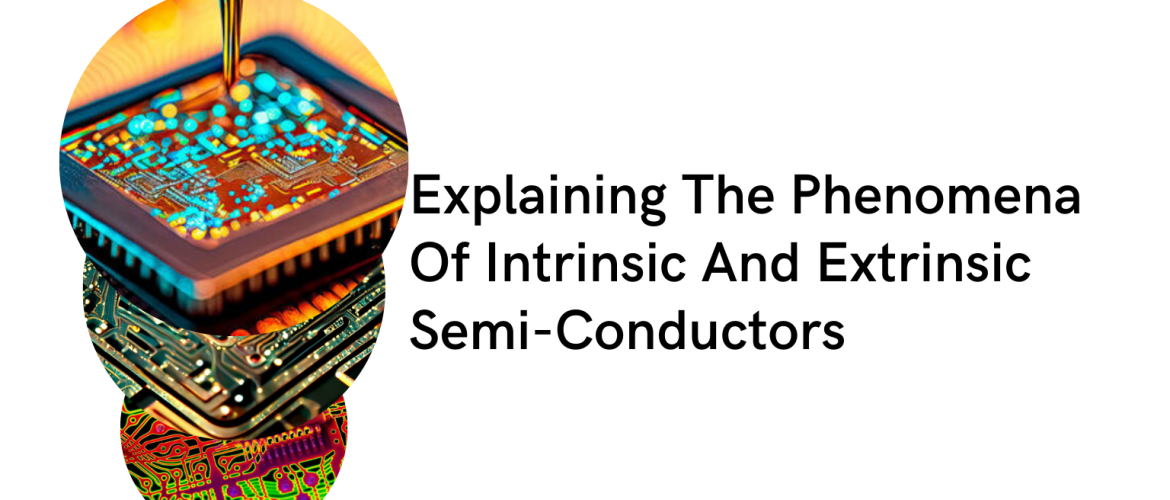Intrinsic Semiconductor
Imagine a crystal made of a material like pure silicon or germanium.
At very low temperatures, this crystal behaves like an insulator, which means it doesn’t let electricity flow through it easily.
In an insulator, all the electrons are tightly bound to their atoms and can’t move around much.
Now, let’s warm up this crystal just a bit, but not too much.
As it gets warmer, some of the electrons start to gain a little bit of energy.
This extra energy allows them to break free from their atoms and move around a little.
When these electrons move, they create tiny electric currents, and the crystal starts to conduct electricity a little bit.
But here’s the interesting part: the crystal still isn’t a very good conductor like a metal (like copper).
It’s in between an insulator and a conductor, which is why we call it a “semiconductor.”
This type of semiconductor, made of pure material, is called an “intrinsic semiconductor.”
Extrinsic Semiconductor
Now, let’s say we want to make this semiconductor better at conducting electricity, like turning it into a tiny computer chip.
We can do that by adding some special ingredients, like tiny amounts of other elements, into the crystal. These special ingredients are called “dopants.”
When we add a dopant, it can do two things:
N-Type Semiconductor
If we add a dopant that has extra electrons compared to the atoms in the crystal (like phosphorus), it’s called a “donor.”
These extra electrons become the ones that can move around and conduct electricity.
This makes the crystal a better conductor.
We call this an “N-type semiconductor” because it has more Negative (N) charges, which are the electrons.
P-Type Semiconductor
If we add a dopant that has fewer electrons than the atoms in the crystal (like boron), it’s called an “acceptor.”
These missing electrons leave behind something called “holes” in the crystal structure.
Electrons can move into these holes, creating a positive charge. This also makes the crystal a better conductor but in a different way.
We call this a “P-type semiconductor” because it has more Positive (P) charges, which are the holes.
When we combine N-type and P-type semiconductors together in a specific way, we create devices like diodes and transistors, which are the building blocks of modern electronics.
In A Nutshell
Intrinsic Semiconductor
- An intrinsic semiconductor is a pure semiconductor material with no intentional impurities or dopants added.
- It has a balanced number of electrons (charge carriers) and holes (electron vacancies) at room temperature.
- Its electrical conductivity is relatively low due to the limited number of charge carriers.
- The behavior of charge carriers in an intrinsic semiconductor is primarily influenced by temperature; increasing temperature provides more thermal energy to create electron-hole pairs, enhancing conductivity.
- Silicon and germanium are examples of intrinsic semiconductors.
Extrinsic Semiconductor
- An extrinsic semiconductor is a semiconductor intentionally doped with specific impurities to modify its electrical properties.
- It can be either n-type or p-type, depending on the type of dopants added.
- In an n-type extrinsic semiconductor, dopants (e.g., phosphorus) introduce additional electrons, increasing conductivity.
- In a p-type extrinsic semiconductor, dopants (e.g., boron) create electron “holes,” which act as positive charge carriers, also increasing conductivity.
- Extrinsic semiconductors are commonly used in electronic devices, such as transistors and diodes because their conductivity can be precisely controlled through doping.




Leave A Comment